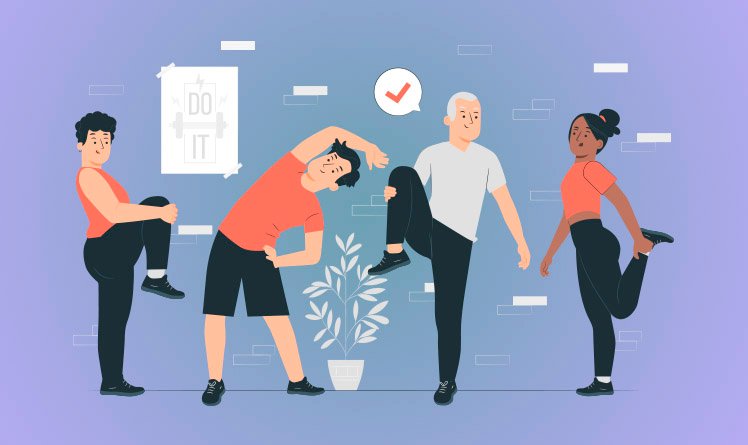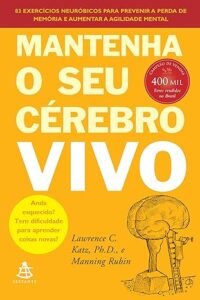Exercise and the Brain: How Movement Transforms Your Mind and Well-Being

|
Getting your Trinity Audio player ready...
|
You've heard that the body talks. But perhaps you haven't stopped to consider that it also thinks—or, better yet, directly influences your thoughts. In times when there's so much talk about mental health, productivity, and focus, science makes one thing very clear: movement isn't a luxury; it's a cerebral necessity.
Thus, the goal of this article is to show, based on recent findings, how physical exercise can be a powerful tool for personal transformation. And no, this isn't just about immediate well-being. We're talking about structural, profound, and lasting changes. The kind that starts with one step—literally—and spreads like a domino effect through the way you think, feel, and act. Let's move on!
Introduction: Why talk about physical exercise and the brain?
It's no secret that exercise is good for the body. But what about the brain? Have you ever stopped to think about how a simple walk can clear your head, reduce your anxiety, or change your mood? It's not magic: it's neuroscience.
Physical movement plays a direct role in our mental health. In this sense, when we understand this relationship, we realize that it's not just about working out to have a beautiful body, but about putting the body in motion to transform our thoughts, beliefs, and behaviors. Thus, it's also about reprogramming our mindset.
What science reveals about movement and neuroplasticity
Neuroplasticity is the brain's ability to adapt, create neural connections, and reorganize its circuits. First and foremost, studies show that physical exercise increases the production of BDNF (brain-derived neurotrophic factor), a protein essential for the formation of new synapses.
Thus, the more we move, the more we create healthy brain pathways. This means faster learning, greater emotional resilience, and mental flexibility. In other words, exercising your body is like "weight training" for your brain.
“Physical exercise stimulates neuroplasticity because it increases the production of BDNF, a protein essential for creating and strengthening brain connections.”
Neurotransmitters: the chemical cocktail of happiness
During exercise, our body releases neurotransmitters such as dopamine, serotonin, endorphins, and norepinephrine. These substances are directly linked to pleasure, motivation, focus, and well-being.
On the other hand, when we're still, we tend to harbor repetitive, negative thoughts. But when we move, this cycle chemically breaks. Therefore, physical exercise is one of the most effective interventions for those suffering from anxiety, depression, and lack of mental energy.
“During physical exercise, the brain releases neurotransmitters such as dopamine, serotonin, and endorphins, which promote well-being, focus, and motivation.”
Physical exercise and limiting beliefs: a bridge to NLP
According to Neuro-Linguistic Programming (NLP), beliefs are reinforced by experiences and bodily sensations. Thus, when the body experiences something new, the brain reinterprets reality. So, imagine how an exercise routine can help break beliefs like "I can't do it" or "I can never stay focused."
Every small victory in movement—like climbing a flight of stairs without tiring or finishing a workout that seemed impossible—turns into a anchoring positive. And this literally reprograms the mind.
Mindfulness in motion: meditation, walking and the present body
Physical exercise can also be a practice of mindfulness. Therefore, when we focus on our breathing during a light jog or feel the contact of our feet with the ground during a mindful walk, we train our mindfulness.
Likewise, the body becomes an anchor for the present, helping to reduce mental ruminations and increase emotional awareness. The practice called MAP Training, for example, combines meditation with aerobic exercise, showing significant results in reducing anxiety and increasing cognitive capacity.
The role of physical exercise in positive psychology
Positive psychology seeks to expand what works well for us. Within this approach, exercise is one of the most comprehensive tools. It activates the pillar of engagement (flow), strengthens self-esteem, improves sleep quality, and increases a sense of accomplishment.
Furthermore, moving our bodies connects us with the pleasure of living, something essential for those who want to get out of autopilot and create a life with more purpose.
Strength, aerobic, or HIIT training? What the latest research says
Recent studies show that different types of exercise impact the brain in different ways:
- Aerobic: increases hippocampal volume (memory) and reduces inflammation.
- Strength training: protects the prefrontal cortex (decision making).
- HIIT: improves executive functions (focus, planning) with less training time.
The good news is that they all work. Ideally, find the one that best fits your lifestyle and stick with it regularly.
Movement and cognition at different stages of life
In childhood, exercise improves academic performance and regulates ADHD. Furthermore, in adulthood, it protects against burnout and increases productivity. In old age, it slows cognitive decline, preserving memory and autonomy.
The conclusion is clear: it's never too early or too late to move your body and reap the mental benefits.
Epigenetics and the Brain: How Exercise Changes Your Biology
Did you know that physical exercise can activate or silence genes linked to mental health? This happens through epigenetics: the set of mechanisms that regulate which genes are expressed without changing the DNA itself. Above all, regular exercise stimulates DNA methylation, histone acetylation, and the production of microRNAs that promote neurogenesis and reduce brain inflammation.
In other words, by moving, you're literally rewriting your brain's functioning at the molecular level. This not only improves cognition but also helps prevent neurodegenerative diseases and disorders like depression and anxiety.
Movement and the nervous system: a constant dialogue
The central nervous system and the musculoskeletal system maintain a continuous conversation. When you move, you activate proprioceptors and mechanoreceptors that send signals to the brain. This sensory feedback stimulates areas such as the cerebellum, motor cortex, and prefrontal cortex.
Additionally, coordinated exercises (such as dancing, ball sports or tai chi chuan) challenge sensorimotor integration and increase attention span, inhibitory control, and working memory. The result? A more agile, attentive, and integrated brain.
Mental reprogramming through the body: where to start?
You don't have to start by running 10K or going to the gym seven times a week. Start with what you have. Walk. Dance at home. Stretch. Climb the stairs.
The most important thing is to transform movement into a ritual. With intention and consistency, the body learns, and the brain changes. Physical movement isn't just an activity—it's a mental reprogramming strategy.
So, believe that you can. And don't let it happen. beliefs and myths take care of yourself. After all, science has already proven that physical exercise has enormous benefits for our minds.
“Physical exercise is an effective tool for reprogramming your mindset because it breaks limiting mental patterns and reinforces positive emotional states.”
Bottom line: move to change
If you're looking for focus, lightness, confidence, or well-being, the starting point may be right at your feet. Literally. Body movement transforms brain neurochemistry, unlocks limiting thoughts, and builds a new mental state.
After all, it's not just about exercising the body. It's about training the mind through the body. And that's powerful mindset reprogramming.
FAQ – Questions and answers about physical exercise and the brain
1. What is the best physical exercise for the brain?
Aerobics like walking, running, or cycling have the most evidence, but strength training and HIIT are also highly effective for cognitive function.
2. How much exercise is enough to improve mental well-being?
Studies show that 20 to 30 minutes of moderate activity, 3 times a week, already brings cognitive and emotional improvements.
3. Does physical exercise help treat anxiety and depression?
Yes. It reduces symptoms by releasing neurotransmitters linked to well-being, acting as a "natural antidepressant."
4. Do children also benefit cognitively from exercise?
Absolutely. Movement improves focus, memory, behavior, and even academic performance.
5. Can I combine meditation with physical exercise?
Yes. The technique called MAP Training shows that combining the two enhances cognitive results and further reduces stress.
Recommended reading:
Image: Freepik

Marcel Castilho is an expert in neuromarketing, neuroscience, mindfulness and positive psychology. In addition to being an advertiser, he also has a Master's degree in NLP – Neurolinguistic Programming. As the owner and founder of the communications agency VeroCom and also of the digital agency Vero Contents, he has been studying human behavior for over 30 years.


